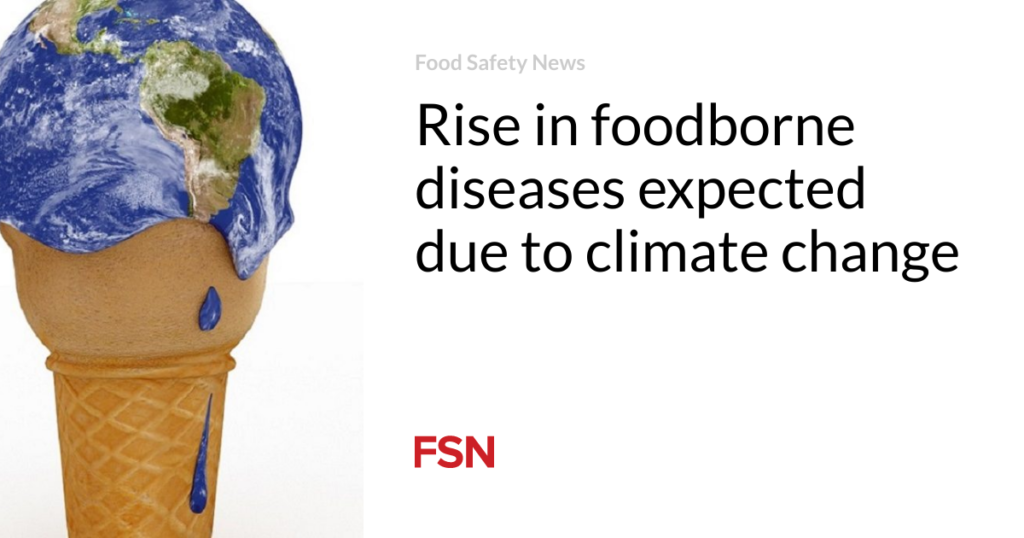Scientists say climate change is expected to lead to an increase in food poisoning, posing a growing public health risk in Germany.
One of a series of papers published in the Robert Koch Institute health monitoring journalwhich focuses on the impact of climate change on foodborne illness.
This review examines the human health hazards posed by related food poisoning bacteria, parasites and marine toxins in Germany, including Salmonella, Campylobacter, Vibrio, and the parasites Cryptosporidium and Giardia.
Climate change can lead to warmer air and water temperatures, more precipitation, or water scarcity. For example, in the future, water shortages may force agriculture to rely more on treated wastewater. Researchers say this poses a risk to food safety due to possible contamination of irrigated crops with pathogens.
Campylobacter, Salmonella, Vibrio
Campylobacter infections are usually seasonal, with most cases occurring during the summer months from July to September. An increase in the number of infected people is expected due to increased warming as a result of climate change and the resulting prolonged periods of warm weather.
Research suggests that warmer temperatures during the summer months may increase prevalence in poultry flocks, increasing consumer exposure from poultry meat consumption.
Changes in behavior during the summer, such as more frequent barbecue of poultry and other meats and swimming in surface waters, may indirectly contribute to an increase in infectious diseases. Increased infections and outbreaks have also been observed after heavy rains and floods.
In Europe, most cases of salmonellosis are reported during the summer.
Salmonella thrives in hot weather, so concentrations in contaminated food are higher during warmer months. Among other things, this relates to improper food preparation and refrigerator storage during barbecues and picnics, which is also common in summer. Elevated temperatures increase the risk of cold chain disruptions, which can have a significant impact on the microbiological status of food.
So far, food poisoning Vibrio infections are rare in Europe. Vibrio outbreak researchers say global warming and increased heatwaves could accelerate the infection, leading to the spread of the disease in Europe and possibly the establishment of the new species, which could lead to human infections in the future. The rate is likely to rise.
Rising water temperatures will lead to increased vibrio contamination in European seafood catch, harvest and aquaculture areas, extending beyond the summer and autumn months.
Accurate information about vibrio infections due to food poisoning is not yet available. In Germany, only isolated cases have been recorded since mandatory reporting was introduced in 2020, either due to low exposure to products containing Vibrio, or because the majority of the illness has not been detected or reported. It may indicate that Raw or undercooked products such as mussels and oysters pose a risk, especially for people with weakened immune systems or pre-existing medical conditions.
Parasites and precautions
A yet-to-be-published study from the German Federal Institute for Risk Assessment (BfR) shows that climate change has a direct impact on the prevalence and virulence of parasites that are already highly stable in the environment. ing. Cryptosporidium and Giardia can remain contagious and cause disease for long periods of time, especially after eating raw contaminated food.
Extreme weather events, such as heavy rainfall and flooding, which are expected to increase as a result of climate change, increase the risk of infectious oocysts/cysts entering water bodies and contamination of plant-based foods, researchers say. It says.
Climate change is altering the geographic distribution of some algal species that may be involved in harmful algae outbreaks. Marine toxins cannot be detected by odor, taste or appearance, and are generally not destroyed by cooking, freezing, or other preparation processes.
“Our main recommendations for minimizing food poisoning and health risks from food poisoning are in the area of kitchen hygiene, which should always be applied when preparing food. but includes thorough hand washing and use of fresh utensils after handling raw meat or fish,” the researchers said.
“In addition, most microbial pathogens can be safely killed by a sufficient heating process. For example, when cooking seafood, the core temperature should be maintained at 70°C (158°F) for at least two minutes. there is.
“We also recommend using new technologies to track the supply chain. can be difficult to identify – Technological advances have created digital solutions for this Knowledge of fish stocks, seafood traceability and supply chain transparency can benefit from innovative approaches You can receive it.”
(To sign up for a free subscription to Food Safety News, click here. )


